Outfitting Sea Kayaks - cockpit outfitting
Go to |
|||
Water Container Storage - Most sea boats have a lot of spare space in the cockpit, just back from the front bulkhead. If a footpump isn't fitted, then this space is wasted. Dave Biggs came up with a novel way of utilising this to provide a way of storing a few gallons on water!
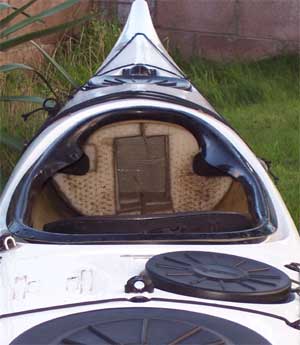 |
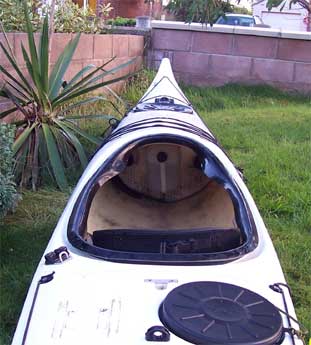 |
Closed cell foam blocks have been profiled to fit
inside the hull, with a cut-out to take a water container. |
View with the container in place - neat & secure. |
Ways of securing things in cockpits - Wanting to secure things behind the seat, and not having any fibreglass handy, I used some light bungee cord and some stainless fittings to make a secure but easily releasable system to hold a dry bag. This carries my secondary flare-pack - my primary flares are either in my BA pocket or the deck bag.
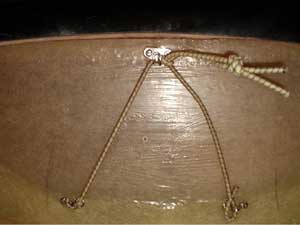 |
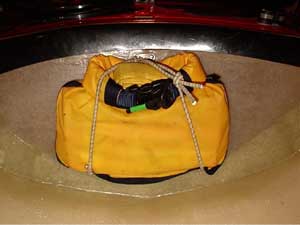 |
A pair of "U" brackets and an open hook,
all secured with stainless bolts and nuts to the rear bulkhead behind
the seat. |
The dry-bag with flares in place - the excess loop
of bungee is a "grab handle". Or grabbing the dry bag handle
itself will also release the bungee from the open top hook. |
~ ~ ~
As an alternative, and having a spare Knoydart tow-line bag lying around doing nothing useful, I'm experimenting with using it as an "under-deck-bag". The Knoydart bag comes with velcro to attach it to the deck so I cleaned off the underside of the fore-deck using acetone and applied some wide self-adhesive velcro (obtainable from most decent DIY stores) and it seems to secure the bag well.
I'm presently using it to store my flares. As it's not waterproof, each flare has been sealed into a small ziplock bag, the end of the zips having been sealed with repair tape. I've left a small tab to make removing the tape easier. The bag would hold four flares easily. Alternatively of course, it could serve as storage for anything as long as it doesn't need to stay dry.
You can also buy North Water bags specifically designed to fit under the foredeck and either side of the cockpit for storing odds and ends. The tow-line bag might be a cheaper option!
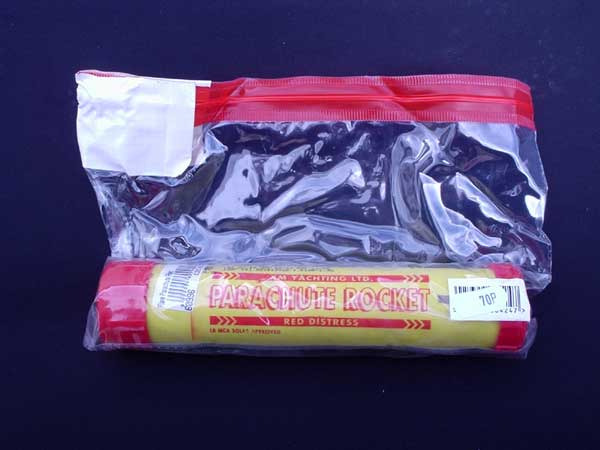 |
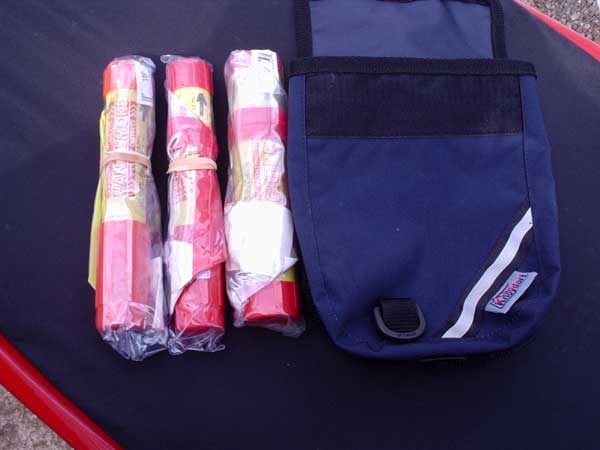 |
Small zip-lock used to waterproof a parachute rocket.
The zipped end has been taped to seal it. |
Hand held smoke, hand held red flare and parachute
rocket with the Knoydart tow-line bag. |
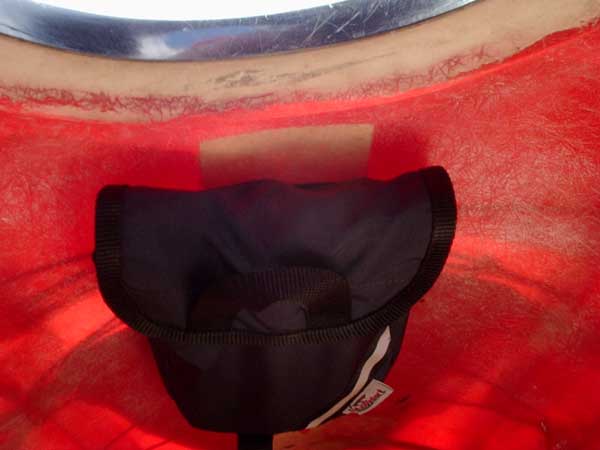 |
| The Knoydart tow-line bag with 3 flares in place
under the fore-deck
|
~ ~ ~
Knee tubes are a popular way of providing extra storage in the cockpit, with the benefit that it is easily accessible at sea simply by popping the deck. Valley and others produce various ready-made generic knee tubes but Chris Bolton created his own.
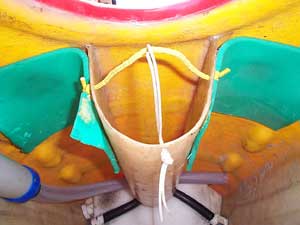 |
The knee tube holds a small BDH and a thermos. It was made by folding a sheet of plastic round the BDH and thermos, then glassing over it. He then used this as a plug, to make knee tubes for 3 boats. Not visible in the photo is that the forward end of the knee tube is hemispherical, so that he can't get his feet caught behind it. This was achieved by stuffing a ball in the end of the plastic tube and taping round it, to form the required shape to make the plug from. There is a loose length of elastic linked into a cord, to stop the thermos falling out. Note the ubiquitous sleeping-pad material used for extra comfort - a common add-in, especially in glass boats. (Pic: Chris Bolton) |
~ ~ ~
Mike Jackson of Victoria, BC, mailed with a variation on the water container storage idea above - as his legs are short enough, he can put a sleeping bag (hard to fit elsewhere) inside a dry compression sack (Seattle sports makes one - I don't know of a UK equivalent though) and a stuff sack. Helps to fill up empty space between the foot pegs and the front bulkhead.
Backrests
Many boats come with inadequate backrests and these are often a source of discomfort or pain. Various alternatives exist, common amongst these being to replace the back-strap with a foam block tapered to fit. Here's some examples from Roland Woolveren.
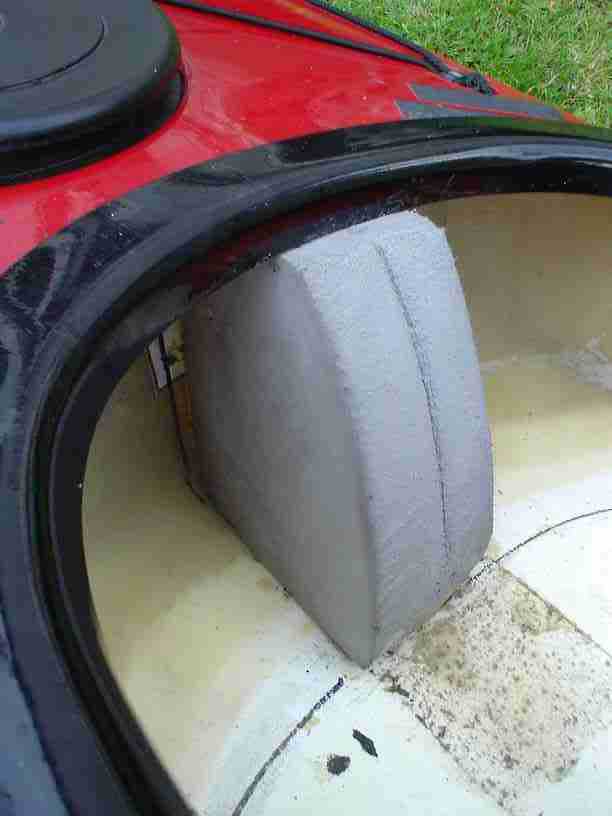
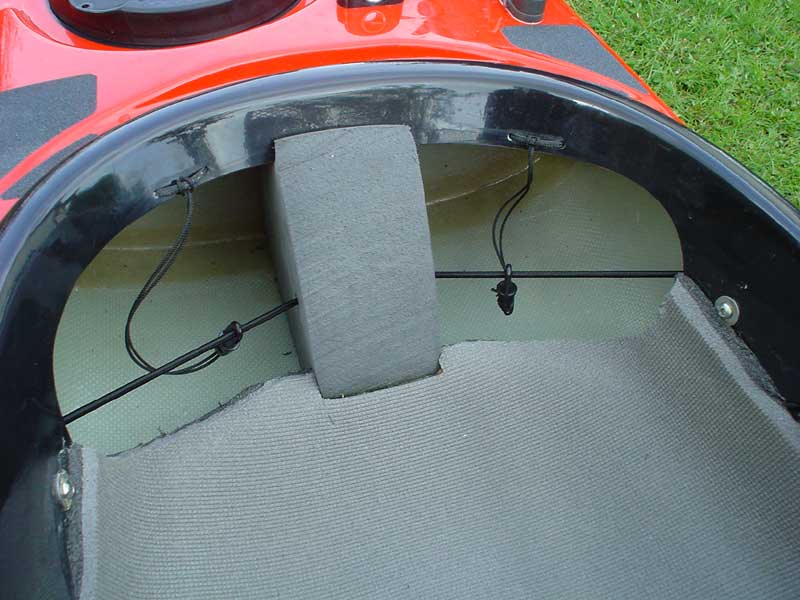
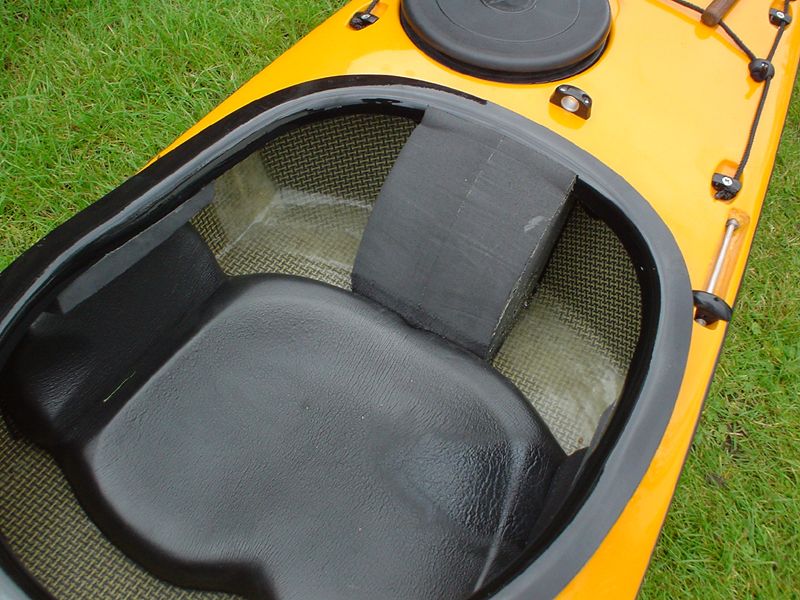
This shot also shows a foam seat. (Pics: Roland Woolveren)
Footrests - many sea kayaks come fitted with adjustable plastic footrests fitted to a plastic rail - if you want something more substantial, consider replacing them with a Yakima aluminium system. If doing this to a P&H boat which has the rail mounting bolts bonded to the hull, you can use the fore-most bolt to secure the front of the replacement rail but you'll need to drill the boat for the rear-ward bolt location as the Yakimas seem to use a different bolt spacing to the more usually used plastic rails.
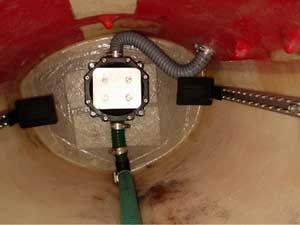
Yakima rail and footrests in a P&H Quest.
~ ~ ~
Alternatively, consider removing the rails and replacing them with a block of high density mini-cell foam contoured to the hull shape. If you've got a foot pump fitted, you can make a cut out to allow the pump to be used, rather like the idea illustrated in Dave Bigg's pictures for his water container storage above. This discussion has some thoughts on the subject.
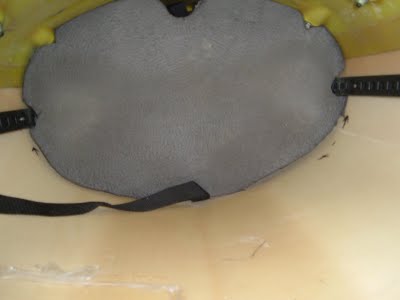
(Pic: "Corgimas")
This has the added advantage of reducing the cockpit volumn and thus the amount of water you have to pump out! Brookbank and others sell nice dense foam by the block. If you can get hold of the foam floats used in a swiming pool, these make a cheap / free alternative.
~ ~ ~
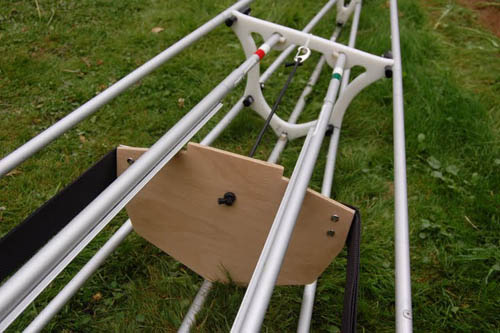
(Pic: "ChrisS")
ChrisS created a cunning footrest for his Khatsalano using some plywood, Fastex buckles and webbing - more pics here. This idea could also be adapted for a hard-shell boat.
~ ~ ~
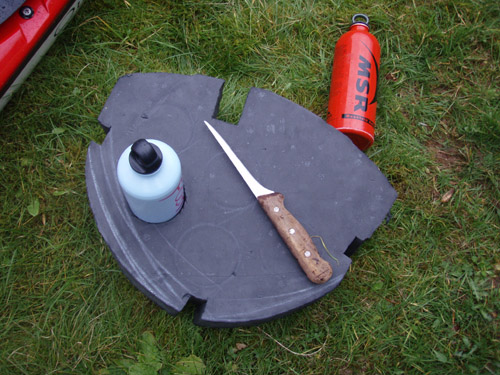 |
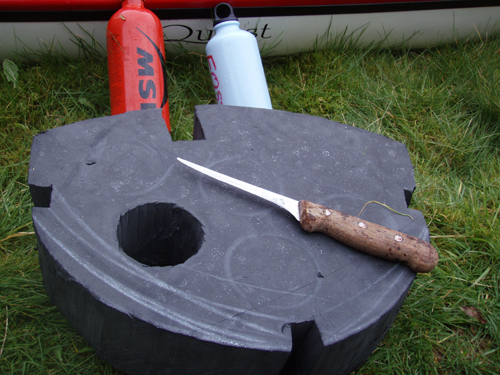 |
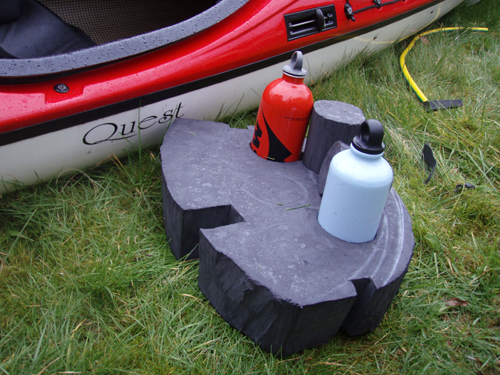 |
|
"Canoe-Cowal" devised this clever method of creating a foam block to reduce volumn in the cockpit and provide storage for two bottles - one contains whisky, the other stove fuel. The principle would also work to create a footrest. She provides a tip for getting the profile of the cockpit and that is to use some heavy guage (10 mm) electric cable which will retain it's shape so you can cut the foam block to the right profile. |
||
Go to |
|||
I'd welcome any thoughts, input, ideas or suggestions either on the concepts here, or on any other ideas you use yourself or have seen someone else using, so please feel free to contact me if you can add to this in any way.
|
||
| Mike Buckley - October, 2004. | (Page last updated
22-Sep-2010
) |
|